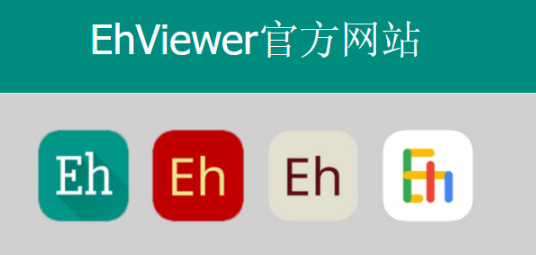spring依赖注入
时间:2010-08-21 来源:C'est la vie
使用构造器注入
使用属性setter方法注入
使用Field注入(用于注解方式)
注入依赖对象可以采用手工装配或自动装配,在实际应用中建议使用手工装配,因为自动装配会产生未知情况,开发人员无法预见最终的装配结果。
1.手工装配依赖对象
手工装配依赖对象,在这种方式中又有两种编程方式
* 在xml配置文件中,通过在bean节点下配置
* 在java代码中使用@Autowired或@Resource注解方式进行装配
依赖注入--手工装配--XML方式
通过setter方法注入依赖
<bean>元素的< property >子元素指明了使用它们的set方法来注入。可以注入任何东西,从基本类型到集合类,甚至是应用系统的bean。
通过setter方法注入依赖
* 简单bean配置
配置bean的简单属性,基本数据类型和String。
<beanid="personService" class="com.itcast.bean.impl.PersonServiceImpl">
<!-- 基本类型,string类型 -->
<property name="age"value="20"></property>
<propertyname="name" value="张无忌"></property>
</bean>
通过setter方法注入依赖
*引用其它bean
<bean id="person"class="com.itcast.bean.Person" />
<beanid="personService"
class="com.itcast.bean.impl.PersonServiceImpl">
<!-- 引用类型 -->
<propertyname="person" ref="person" />
</bean>
* 内部bean
<bean id="personService"class="com.itcast.bean.impl.PersonServiceImpl">
<!-- 内部bean注入 -->
<propertyname="personClass">
<beanclass="com.itcast.bean.PersonClass" />
</propert>
</bean>
这种方式的缺点是你无法在其它地方重用这个personClass实例,原因是它是专门为personService而用。
*装配集合
若bean的属性是集合类型,按如下处理:
A、装配List和数组:
<!-- 装配list -->
<propertyname="lists">
<list>
<value>list1</value>
<value>list2</value>
<refbean="person"/>
</list>
</property>
<!--装配数组 -->
<property name="obj">
<list>
<value>obj1</value>
<value>obj2</value>
<refbean="person"/>
</list>
</property>
B、 装配set:
<!--装配set -->
<property name="sets">
<set>
<value>set1</value>
<value>set2</value>
<refbean="person"/>
</set>
</property>
set使用方法和list一样,不同的是对象被装配到set中,而list是装配到List或数组中装配。
*装配集合
C、装配map:
<!-- 装配map-->
<propertyname="maps">
<map>
<entrykey="01">
<value>map01</value>
</entry>
<entrykey="02">
<value>map02</value>
</entry>
</map>
</property>
map中的<entry>的数值和<list>以及<set>的一样,可以使任何有效的属性元素,需要注意的是key值必须是String的。
D、装配Properties:
<!--装配Properties -->
<property name="props">
<props>
<prop key="01">prop1</prop>
<prop key="02">prop2</prop>
</props>
</property>
E、设置null:
<!--装配null -->
<property name="listnull">
<null/>
</property>
通过参数的顺序:
<constructor-argindex="0">
<value>张三</value>
</constructor-arg>
<constructor-argindex="1">
<value>56</value>
</constructor-arg>
通过构造函数注入依赖
<!--通过参数的类型 -->
<constructor-argtype="java.lang.Integer">
<value>56</value>
</constructor-arg>
<constructor-argtype="java.lang.String">
<value>张三</value>
</constructor-arg>
依赖注入--手工装配—注解方式
在java代码中使用@Autowired或@Resource注解方式进行装配的前提条件是。
1、引入context命名空间 需要在xml配置文件中配置以下信息:
<beansxmlns="http://www.springframework.org/schema/beans"
xmlns:xsi="http://www.w3.org/2001/XMLSchema-instance"
xmlns:context="http://www.springframework.org/schema/context"
xsi:schemaLocation="http://www.springframework.org/schema/beans
http://www.springframework.org/schema/beans/spring-beans-2.5.xsd
http://www.springframework.org/schema/context
http://www.springframework.org/schema/context/spring-context-2.5.xsd">
<context:annotation-config/>
</beans>
2、在配置文件中添加context:annotation-config标签
<context:annotation-config/>
这个配置隐式注册了多个对注释进行解析处理的处理器
AutowiredAnnotationBeanPostProcessor,CommonAnnotationBeanPostProcessor,
PersistenceAnnotationBeanPostProcessor,RequiredAnnotationBeanPostProcessor
注: @Resource注解在spring安装目录的lib\j2ee\common-annotations.jar
在java代码中使用@Autowired或@Resource注解方式进行装配,这两个注解的区别是:@Autowired 默认按类型装配,
@Resource默认按名称装配,当找不到与名称匹配的bean才会按类型装配。
@Autowired
private PersonDao personDao;//用于字段上
@Autowired
public void setPersonDao(PersonDaopersonDao) { //用于属性的set方法上
this.personDao = personDao;
}
@Autowired注解是按类型装配依赖对象,默认情况下它要求依赖对象必须存在,如果允许null值,可以设置它required属性为false。
@Autowired(required=false)
private PersonDao personDao;//用于字段上
@Autowired(request=false)
public void setPersonDao(PersonDaopersonDao) { //用于属性的set方法上
this.personDao = personDao;
}
如果我们想使用按名称装配,可以结合@Qualifier注解一起使用。如下:
@Autowired@Qualifier("personDao")
privatePersonDao personDao;//用于字段上
@Autowired
publicvoid setPersonDao(@Qualifier("personDao") PersonDao personDao) {//用于属性的set方法上
this.personDao = personDao;
}
@Qualifier注解也能够被指定为构造器的参数或者方法的参数:
@Resource注解和@Autowired一样,也可以标注在字段或属性的setter方法上.
@Resource注解默认按名称装配。
名称可以通过@Resource的name属性指定,如果没有指定name属性,
当注解标注在字段上,即默认取字段的名称作为bean名称寻找依赖对象
当注解标注在属性的setter方法上,即默认取属性名作为bean名称寻找依赖对象。
@Resource(name="personDao")
privatePersonDao personDao;//用于字段上
@Resource(name="personDao")
publicvoid setPersonDao(PersonDao personDao) {//用于属性的set方法上
this.personDao = personDao;
}
后一种相当于xml配置文件中的
<property name=“personDao"ref="personDao" />
注意:如果没有指定name属性,并且按照默认的名称找不到依赖对象时, @Resource注解会回退到按类型装配。但一旦指定了name属性,就只能按名称装配了。
2.自动装配依赖对象
对于自动装配,大家了解一下就可以了,实在不推荐大家使用。例子:
<beanid=“foo” class=“...Foo” autowire=“autowire type”>
autowire属性取值如下
* byType:按类型装配,可以根据属性的类型,在容器中寻找跟该类型匹配的bean。如果发现多个,那么将会抛出异常。如果没有找到,即属性值为null。
* byName:按名称装配,可以根据属性的名称,在容器中寻找跟该属性名相同的bean,如果没有找到,即属性值为null。
*constructor与byType的方式类似,不同之处在于它应用于构造器参数。如果在容器中没有找到与构造器参数类型一致的bean,那么将会抛出异常。
*autodetect :首先尝试使用constructor来自动装配,然后使用byType方式。不确定性的处理与constructor方式和byType方式一致。
通过在classpath自动扫描方式把组件纳入spring容器中管理
前面的例子我们都是使用XML的bean定义来配置组件。在一个稍大的项目中,通常会有上百个组件,如果这些组件采用xml的bean定义来配置,显然会增加配置文件的体积,查找及维护起来也不太方便。
spring2.5为我们引入了组件自动扫描机制,它可以在类路径底下寻找标注了@Component、@Service、@Controller、@Repository注解的类,并把这些类纳入进spring容器中管理。它的作用和在xml文件中使用bean节点配置组件是一样的。
要使用自动扫描机制,我们需要打开以下配置信息:
1、引入context命名空间 需要在xml配置文件中配置以下信息:
<beansxmlns="http://www.springframework.org/schema/beans"
xmlns:xsi="http://www.w3.org/2001/XMLSchema-instance"
xmlns:context="http://www.springframework.org/schema/context"
xsi:schemaLocation="http://www.springframework.org/schema/beans
http://www.springframework.org/schema/beans/spring-beans-2.5.xsd
http://www.springframework.org/schema/context
http://www.springframework.org/schema/context/spring-context-2.5.xsd">
<context:component-scanbase-package="cn.itcast"/>
</beans>
2、在配置文件中添加context:component-scan标签
<context:component-scanbase-package="cn.itcast"/>
其中base-package为需要扫描的包(含子包)。
注:
1、在使用组件扫描元素时,AutowiredAnnotationBeanPostProcessor和CommonAnnotationBeanPostProcessor会隐式地被包括进来。 也就是说,连个组件都会被自动检测并织入 - 所有这一切都不需要在XML中提供任何bean配置元数据。
2、功能介绍
@Service用于标注业务层组件、
@Controller用于标注控制层组件(如struts中的action)、
@Repository用于标注数据访问组件,即DAO组件。
而@Component泛指组件,当组件不好归类的时候,我们可以使用这个注解进行标注。
//Dao层
importorg.springframework.stereotype.Repository;
importcom.itcast.dao.PersonDao;
@Repository("personDao")
publicclass PersonDaoBean implements PersonDao {
}
//业务层
importjavax.annotation.Resource;
importorg.springframework.stereotype.Service;
importcom.itcast.dao.PersonDao;
importcom.itcast.service.PersonService;
@Service("personService")
publicclass PersonServiceBean implements PersonService {
@Resource(name="personDao")
private PersonDao personDao;
}










